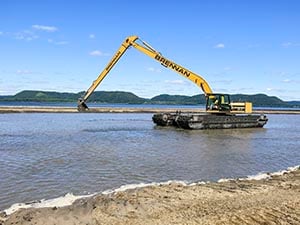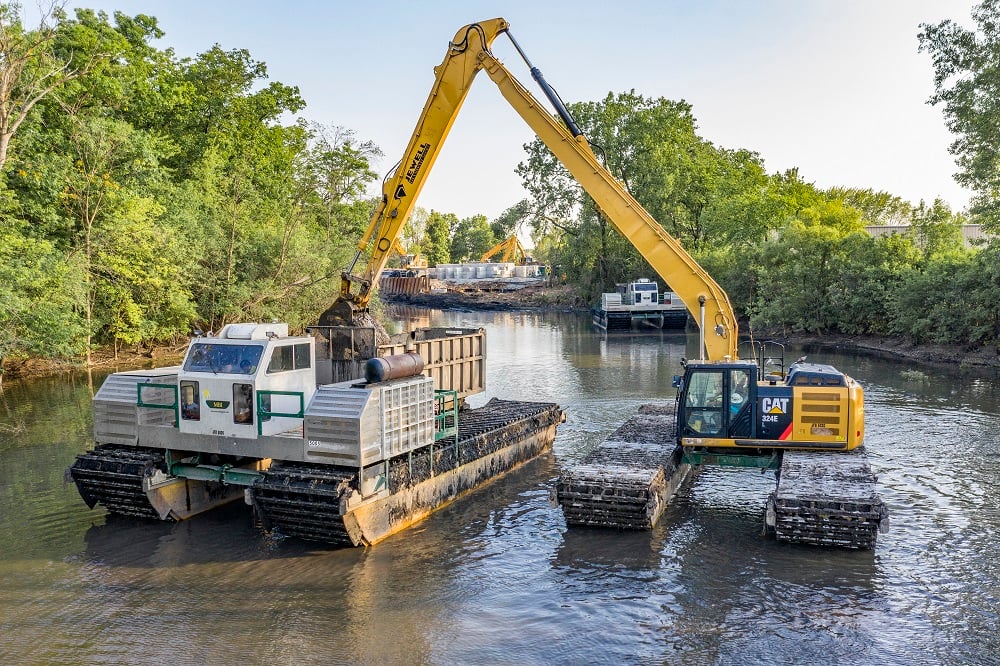Our equipment safely navigates where barges can’t float and where ground equipment can’t trek. Brennan’s specialty amphibious trucks can float fully loaded with a 20-cubic yard payload or be configured to support geotechnical drilling equipment. See our equipment in action with this video!
Brennan's Amphibious Equipment: The Perfect Tool for Wetland Work
For more info about Brennan's amphibious capabilities, visit our Amphibious Dredging page.
How does our amphibious equipment enable wetland remediation and habitat restoration?
Access is one of the challenges faced during a remediation, restoration, or construction project located in the middle of a marshes or wetlands. Typically, contractors have to construct temporary roads to reach work areas safely. This requirement is costly, especially in the case of an environmental remediation project where all materials have to be removed and disposed of as hazardous waste.
Building temporary roads also negatively impacts the sensitive wetland environment and its inhabitants. Other options can save time and money while significantly reducing the negative impact on aquatic plant and animal species.
Amphibious equipment can safely transport people and equipment to work locations over a terrain that is too soft to walk and too dense to float. Environmental remediation projects greatly benefit from such equipment. In addition to the aforementioned advantage of avoiding costly temporary roads, amphibious equipment can increase personnel safety.
that is too soft to walk and too dense to float. Environmental remediation projects greatly benefit from such equipment. In addition to the aforementioned advantage of avoiding costly temporary roads, amphibious equipment can increase personnel safety.
Wetlands are notorious for sinkholes, fluctuating water levels, and defensive reptilian inhabitants; these machines will provide stable work platforms and safe transport. They can function as excavation equipment and provide sand placement and capping platforms.

Shallow water depths often hinder environmental dredging, while land-based excavations are often mired down (literally) in areas where equipment could get stuck. Because amphibious equipment can float, the operator does not have to worry about getting too close to the water's edge. Also, the wide tracks and low weight result in very little ground pressure. This leads to avoiding deep track ruts that typical low-ground pressure equipment, such as wide-tracked bulldozers, will create. Final restoration of the disturbed area is often minimal, requiring mostly replanting instead of reconstruction.
Why use amphibious excavators and amphibious dump trucks?
Amphibious equipment is essential for optimizing productivity in marshes and wetlands, especially when facing access challenges. Our amphibious excavators, amphibious dump trucks, SHERP ATV, and various specialized equipment are efficient solutions that can reduce an environmental project’s impact on sensitive habitats while increasing overall project safety.
For more info about Brennan's amphibious capabilities, visit our Amphibious Dredging page.


